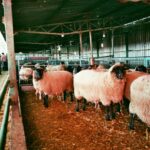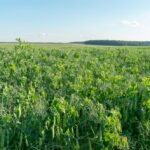Fall armyworm (Spodoptera frugiperda) is a destructive pest that poses a serious threat to maize and other crops across Africa, Asia, and the Americas. Known for its rapid spread and high feeding capacity, fall armyworm has become a major concern for farmers, especially smallholders who depend on staple crops for food and income. Effective management of fall armyworm damage is essential to protect yields, safeguard livelihoods, and ensure food security.
Fall armyworm larvae attack a wide range of crops, with maize being the most affected. The caterpillars feed on leaves, whorls, stems, and even ears of the maize plant, leading to severe defoliation and reduced grain formation. In advanced stages, the damage can lead to complete crop failure. Apart from maize, the pest also targets crops such as sorghum, millet, rice, sugarcane, and various vegetables.
One of the most important steps in managing fall armyworm is early detection. Regular field scouting allows farmers to spot egg masses and young larvae before they cause significant damage. Signs of infestation include ragged leaf edges, holes in leaves, and a sawdust-like substance near the whorl of the plant. Farmers are encouraged to inspect their fields at least once a week, especially during the crop’s early stages.
An integrated pest management (IPM) approach is widely recommended for dealing with fall armyworm. This combines cultural, biological, and chemical methods to achieve effective and sustainable control. Culturally, farmers can practice early planting and intercropping to reduce pest pressure. Early planting ensures that crops are more established before peak infestation periods. Intercropping maize with legumes or other crops can confuse the pest and lower attack rates.
Biological control involves the use of natural predators and beneficial insects. Parasitic wasps, ladybird beetles, and entomopathogenic fungi are known to suppress fall armyworm populations. Some farmers are adopting biopesticides made from plant extracts or microbial agents like Bacillus thuringiensis (Bt), which are effective and environmentally friendly.
Chemical pesticides can be used as a last resort when infestations are severe. However, it’s important to use approved insecticides that are safe, effective, and suitable for the target stage of the pest. Rotating chemical products and avoiding overuse helps prevent resistance buildup. Farmers must follow the recommended dosage and application schedule to ensure safety and efficacy.
Community-based action can greatly improve the success of control measures. Since fall armyworm can migrate rapidly across farms, coordinated efforts at the local or regional level can reduce re-infestation and strengthen collective resilience. Farmer field schools and agricultural extension programs play a key role in training farmers on identification, monitoring, and control practices.
In addition to field-level interventions, government support and early warning systems are essential. Providing timely information on pest outbreaks through radio, SMS, and mobile apps enables farmers to prepare and respond quickly. Some countries have launched national action plans and support programs to provide farmers with training, subsidized inputs, and technical guidance.
Managing fall armyworm damage requires a proactive and informed approach. While the pest cannot be completely eradicated, its impact can be significantly reduced through integrated and locally adapted practices. By investing in pest monitoring, using biological controls, applying chemicals responsibly, and encouraging farmer collaboration, communities can protect their maize and other crops from fall armyworm devastation and build more resilient agricultural systems.
Join 'Farmers Mag' WhatsApp Channel
Get the latest Farming news and tips delivered straight to your WhatsApp
CLICK HERE TO JOIN






